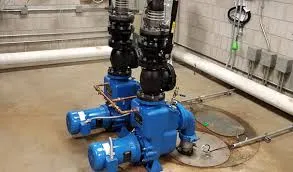Basque
- Afrikaans
- Albanian
- Amharic
- Arabic
- Armenian
- Azerbaijani
- Basque
- Belarusian
- Bengali
- Bosnian
- Bulgarian
- Catalan
- Cebuano
- Corsican
- Croatian
- Czech
- Danish
- Dutch
- English
- Esperanto
- Estonian
- Finnish
- French
- Frisian
- Galician
- Georgian
- German
- Greek
- Gujarati
- Haitian Creole
- hausa
- hawaiian
- Hebrew
- Hindi
- Miao
- Hungarian
- Icelandic
- igbo
- Indonesian
- irish
- Italian
- Japanese
- Javanese
- Kannada
- kazakh
- Khmer
- Rwandese
- Korean
- Kurdish
- Kyrgyz
- Lao
- Latin
- Latvian
- Lithuanian
- Luxembourgish
- Macedonian
- Malgashi
- Malay
- Malayalam
- Maltese
- Maori
- Marathi
- Mongolian
- Myanmar
- Nepali
- Norwegian
- Norwegian
- Occitan
- Pashto
- Persian
- Polish
- Portuguese
- Punjabi
- Romanian
- Russian
- Samoan
- Scottish Gaelic
- Serbian
- Sesotho
- Shona
- Sindhi
- Sinhala
- Slovak
- Slovenian
- Somali
- Spanish
- Sundanese
- Swahili
- Swedish
- Tagalog
- Tajik
- Tamil
- Tatar
- Telugu
- Thai
- Turkish
- Turkmen
- Ukrainian
- Urdu
- Uighur
- Uzbek
- Vietnamese
- Welsh
- Bantu
- Yiddish
- Yoruba
- Zulu
Telephone: +86 13120555503
Email: frank@cypump.com
Urr . 31, 2024 13:02 Back to list
Pipeline Centrifugal Pump Design and Optimization for Efficient Fluid Transport Applications
Understanding Pipeline Centrifugal Pumps
Pipeline centrifugal pumps are critical components in various industries, facilitating the efficient movement of fluids through pipelines. These pumps utilize centrifugal force to convert rotational energy, typically from an electric motor, into hydrodynamic energy, enabling the transfer of liquids over considerable distances.
Working Principle
At the heart of a pipeline centrifugal pump is the impeller, which rotates at high speeds. As the impeller spins, it draws fluid into the pump through the eye of the impeller and accelerates it outward by centrifugal action. This increase in velocity transforms into pressure as the fluid exits through the pump's discharge port. The design of the pump casing plays a crucial role in optimizing this process, as it helps convert kinetic energy into pressure energy.
Applications
Pipeline centrifugal pumps are versatile and are widely employed in various sectors, including water treatment, oil and gas, chemical manufacturing, and food processing. They are essential for applications such as transferring water in municipal systems, moving crude oil through pipelines, and circulating coolants in industrial processes.
pipeline centrifugal pump

Advantages
One of the main advantages of pipeline centrifugal pumps is their ability to handle large volumes of fluid at varying pressure levels. They are relatively simple in design, which not only makes them easy to maintain but also reduces operational costs. Moreover, these pumps can be configured to operate efficiently over a range of flow rates, making them suitable for dynamic applications where demand fluctuates.
Challenges
Despite their advantages, pipeline centrifugal pumps face challenges, including cavitation and viscosity changes in the fluid being pumped. Cavitation occurs when the pressure in the pump drops below the vapor pressure of the fluid, leading to the formation of vapor bubbles that can cause significant damage. Additionally, pumps may struggle with highly viscous fluids, requiring careful selection of pump specifications to ensure optimal performance.
Conclusion
In conclusion, pipeline centrifugal pumps are indispensable in many fluid handling applications due to their efficiency, adaptability, and cost-effectiveness. Their ability to transport liquids over long distances with minimal energy consumption makes them a preferred choice in industries worldwide. Understanding their working principles, advantages, and potential challenges is essential for optimizing their performance and extending their operational lifespan.
-
ISG Series Vertical Pipeline Pump - Chi Yuan Pumps Co., LTD.|High Efficiency, Low Noise, Durable
NewsAug.02,2025
-
ISG Series Vertical Pipeline Pump - Chi Yuan Pumps | High Efficiency, Low Noise
NewsAug.02,2025
-
ISG Series Vertical Pipeline Pump- Chi Yuan Pumps Co., LTD.|High Efficiency&Compact Design
NewsAug.02,2025
-
Heavy-Duty Mining Sludge Pumps - Wear-Resistant Slurry Handling
NewsAug.02,2025
-
Horizontal Split Case Pump with GPT-4 Turbo | High Efficiency
NewsAug.01,2025
-
ISG Series Pipeline Pump - Chi Yuan Pumps | High Efficiency, Durable Design
NewsAug.01,2025










